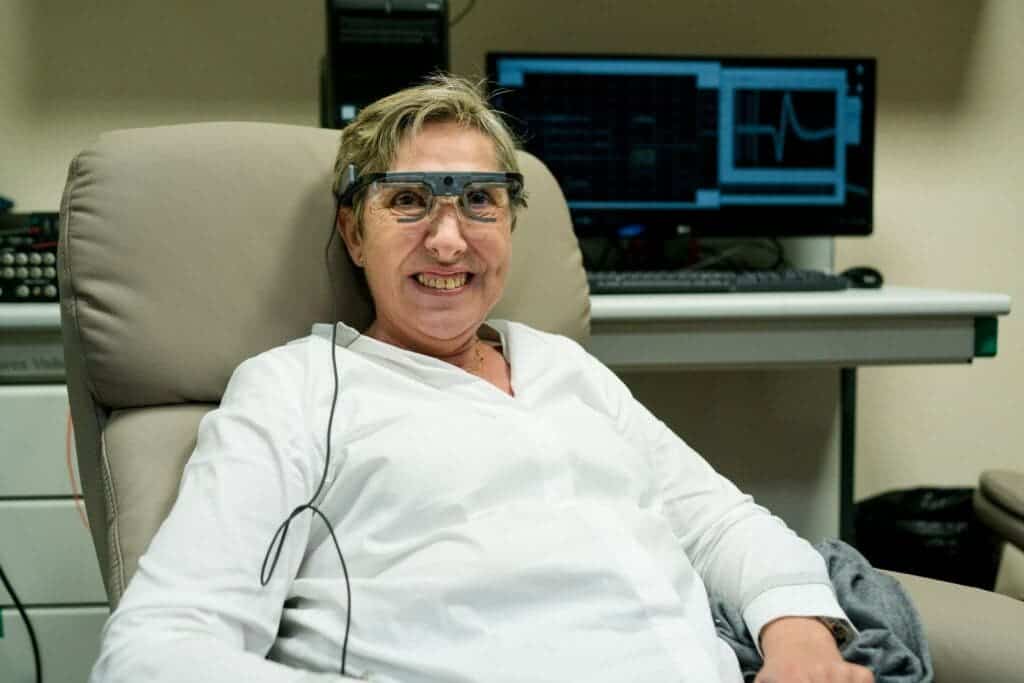A team of Spanish researchers is working to restore sight to blind people by directly stimulating their brains and bypassing the eyes entirely.

Current efforts to address blindness generally revolve around the use of eye implants or procedures to restore (currently limited) functionality to the eye. However, a team of Spanish researchers is working on an alternative approach: bypassing the eyeball entirely.
Their work involves the use of an artificial retina, mounted on an ordinary pair of glasses, that feeds information directly into the users’ brains. The end result is that users can perceive images of what the retina can see. In essence, they’re working to create artificial eyes.
Eyeball 2.0
“The amount of electric current needed to induce visual perceptions with this type of microelectrode is much lower than the amount needed with electrodes placed on the surface of the brain, which means greater safety” explains Fernández Jover, a Cellular Biology Professor at Miguel Hernández University (UMH) of Spain, who led the research.
The device picks up on light from a visual field in front of the glasses and encodes it into electrical signals that the brain can understand. These are then transmitted to an array of 96 micro-electrodes implanted into a user’s brain.
The retina itself measures around 4 mm (0.15 inches) in width, and each electrode is 1.5 mm (0.05 inches) long. These electrodes come into direct contact with the visual cortex of the brain. Here, they both feed data to the neurons and monitor their activity.
So far, we have encouraging data on the validity of such an approach. The authors successfully tested a 1,000-electrode version of their system on primates last year (although the animals weren’t blind). More recently, they worked with a 57-year-old woman who had been blind for over 16 years. After a training period — needed to teach her how to interpret the images produced by the device — she has successfully identified letters and the outlines of certain objects.
The device was removed 6 months after being implanted with no adverse effects. During this time, the authors worked with their participant to document exactly how her brain activity responds to the device, to analyze the learning process, and to check whether the use of this device would lead to any physical changes in the brain.
Although limited in what images it can produce so far, the good news is that the system doesn’t seem to negatively interfere with the workings of the visual cortex or the wider brain. The authors add that because the system requires lower levels of electrical energy to work than other systems which involve electrode stimulation of the brain, it should also be quite safe to use.
Such technology is still a long way away from being practical in a day-to-day setting, and likely even farther away from being commercially available. There are still many issues to solve before that can happen, and safely addressing these will take a lot of research time and careful tweaking. But the results so far are definitely promising and a sign that we’re going the right way. The current study was limited in scope and duration but, based on the results, the authors are confident that a longer training period with the artificial retina would allow users to more easily recognize what they’re seeing.
The team is now working on continuing their research by expanding their experiments to include many more blind participants. They’re also considering stimulating a greater number of neurons at the same time, which should allow the retina to produce much more complex images in the participants’ minds. During the course of this experiment, they also designed several video games to help their participant learn how to use the device. The experience gained during this study, as well as these video games, will help improve the experience of future users and give them the tools needed to enjoy and understand the experience more readily.
Apart from showcasing the validity of such an approach, the experiments also go a long way to proving that microdevices of this type can be safely implanted and explanted in living humans, and they can interact with our minds and brains in a safe and productive way. Direct electrode stimulation of the brain is a risky proposition, but the team showed that this can be performed using safe, low levels of electrical current and still yield results.
Professor Jover believes that neuroprosthetics such as the one used in this experiment are a necessity for the future. There simply aren’t any viable alternative treatments of aids for blind people right now. Although retina prostheses are being developed, many patients cannot benefit from them, such as people who have suffered damage to their optical nerves. The only way to work around such damage right now is to send visual information directly into the brain.
This study proves that it can be done. It also shows that our brains can still process visual information even after a prolonged period of total blindness, giving cause for hope for many people around the world who have lost their sight.
The paper “Visual percepts evoked with an Intracortical 96-channel microelectrode array inserted in human occipital cortex” has been published in The Journal of Clinical Investigation.


